When we think of Buddhism today, we think of pacifism, being at one with the world, love for one’s neighbor and nature, and other aspects of peaceful living. Modern Buddhist monks are devoted to spreading the message of peace and love, but it was not always so. The Sohei monks of medieval Japan were a powerful movement of warrior monks, Buddhists that were men of the cloth and skilled warriors at the same time. In fact, these warrior monks were quite powerful at their height – so much so that they were feared by the government. Over time, the Sohei heroes were firmly woven into the vibrant fiber of Japanese folk tales and legends, where their exploits are still recounted today.
Who Were the Sohei Warrior Monks?
The concept of warrior monks was not all that strange in medieval cultures of the world. In fact, it was somewhat widespread during that tumultuous period. For example, we had the Teutonic Order in Europe, the warrior monks of the Holy Roman Empire that grew into a potent fighting force. Similar were the Knights Templar , devoted Christians who were dedicated to a life of war and prayer. The Sohei can certainly be likened to such European warrior monks. We can safely say that the Japanese Sohei warrior monks were part of a large monastic order, rather than solitary warriors or protectors of a certain temple.
We could consider the Sohei as monastic clans even, a single Sohei order might have had hundreds of temples and monasteries connected to it, which made it into a powerful political and military force. One of the most powerful of these Sohei monasteries was situated on Mount Hiei near Kyoto; it was known as Enryaku-ji and would later be the center point of a major 15th century conflict.
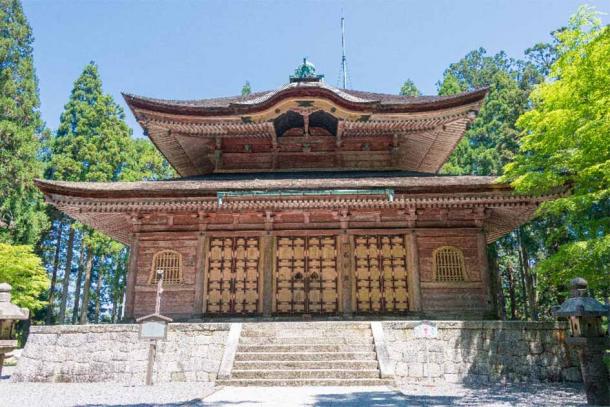
Enryaku-ji Temple in Otsu, Shiga, Japan. It is part of the UNESCO World Heritage Site ( beibaoke / Adobe Stock)
The Sohei movement appeared in the early medieval period, during the so-called Heian period, which lasted from 794 to 1185 AD. This was a turbulent era for Japan’s religious movements. There were many divisions and feuds between rival temples, Buddhist sects, and the appointment of top Buddhist leaders. These feuds spilled into armed conflict, which meant that even simple monks had to don armor and bear weapons of war. For roughly four centuries in the Heian period, Japan saw a lot of fighting and political feuding, which was focused on four most important Buddhist temples at Kyoto, Omi, and Nara: Kōfuku-ji, Mii-dera, Enryaku-ji and Tōdai-ji.

Left: Tōdai-ji Kon-dō Temple, at Nara Japan was a central point of conflict in the Heian period. Right: Five-story pagoda and Tōkondō at Kōfuku-ji, from 1426, although the site dates to 669 AD. (Left: Wiiii / CC BY SA 3.0 ; Right: Public Domain )
Sohei Warrior Monks: Sacred Battles
Buddhism was a major religious movement in medieval Japan. It had many temples and thousands of devoted monks. And when those monks took up weapons, it was clear that a major threat for the government and the emperor appeared. The tensions rose and came to a head in 949 AD, when a force of 56 armed monks began a protest over a conflict with a Kyoto official. Throughout most of the 10th century, such protests were common, and would often erupt into huge brawls where many were killed or injured. It was becoming clear that the monks were vocal about their issues, and did not hesitate to fight for their rights.
Many of the conflicts arose from disputes between the major monasteries and the temples associated with them. In 970 AD, the feud between Kyoto’s Yasaka Shrine and the monastery of Enryaku-ji led to the first establishment of a standing army of warrior monks, by Enryaku-ji. These new warrior monks had a special code of conduct, and went through long and rigorous training. Being devoted to their faith and trained in the arts of war, the Sohei monks became formidable fighters that many would come to fear on the battlefield.
The first considerable armed conflict occurred in 981 AD, between two major temples of two sub-sects of the Tendai school of Buddhism . The feud between them was centered on political appointments (likely political favoritism), and “dishonorable etiquette”. In simpler terms, the feuds arose when the member of one faction would get chosen as the abbot of another faction’s temple – much to the displeasure of the monks. These inner temple rivalries continued over decades, and each new generation meant that the Sohei would get more unified as a distinct group. The conflicts continued into the 11th and 12th centuries, and the monastic armies grew in size and became more defined.
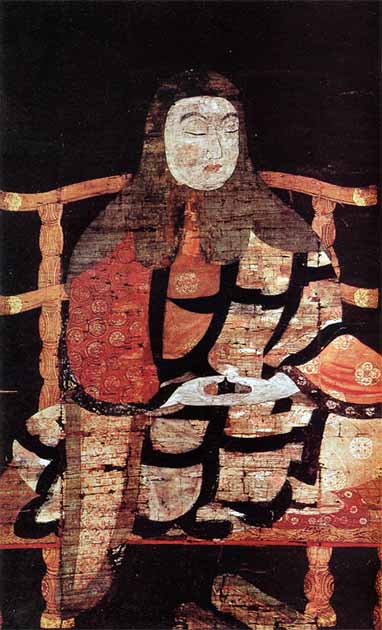
Painting of Saichō, founder of the Tendai sect in Japan ( Public Domain )
When the Monks Take to Arms
The originally peaceful Buddhist temples largely turned a blind eye to the pacifist tenants of their religion, and were not willing to overlook rivalries with other temples. In 1121, and again in 1141, the Mii-dera temple was completely razed to the ground by the warrior monks of the Enryaku-ji.
At other periods, these two temples united, and fought against Kofuku-ji, or Kiyomizu-dera. So, as we can see, it was a monastic free-for-all, where ordinary lay brothers realized that the only way to “stay afloat” in the rivalry of temples was to turn to violence – that old solution to every problem.

The Golden Hall of the Mii-dera complex is a Japanese National Treasure, in Otsu, Shiga prefecture, built in 1599. (663highland / CC BY SA 3.0 )
Throughout the Middle Ages, the Sohei warriors often degenerated into nothing more than small mercenary bands that fought for whomever paid the most. Yet some Sohei armies grew into large factions for themselves, and had a distinct way of life. Sohei monks usually intermarried within their own faction, living a communal lifestyle in unity, with shared views and shared possessions. Orphans and widows were welcomed into the group, and monks followed a strict training routine, becoming able warriors.
Such a lifestyle led to generations of Sohei warrior monks, with the lifestyle being passed down the line. In turn, this made the Sohei, according to some historians, the first full-time professional warriors in history. They lived for war and religion, and were always ready for war. This made them a popular choice as a fighting force, since they were ready to fight at a moment’s notice.
By the time Japan was embroiled in the Genpei Civil War (1180-1185 AD), the Sohei armies were highly sought after. The warring Taira and Minamoto clans sought to obtain the assistance of these powerful warrior monks, in order to swell their existing armies and tip the scales of the war. This only deepened the rift between rival temples, which were now forced to side with different warring clans. During this turbulent period, the Sohei monks participated in many famous battles, excelling as daring warriors who stood their ground and made a formidable force on the battlefield. Still, their temples suffered in turn, as clan leaders exacted their vengeance by razing them to the ground.
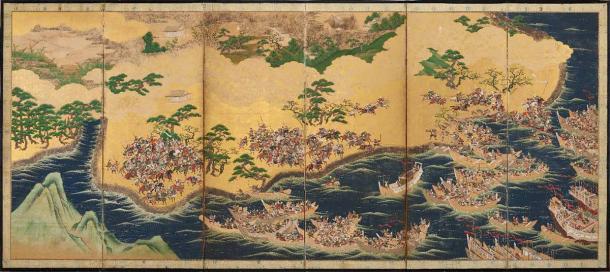
These screens illustrate two battles of the epochal Genpei War (1180–85) as narrated in the Tales of the Heike, an epic semi historical account of two rival clans’ fight for control of Japan, written in the early 1200s. The right screen shows scenes related to the Battle of Ichi-no-Tani, during which the Minamoto clan, identified by the white banners they carry, made a daring attack on the rival Taira clan at a Taira stronghold. The left screen shows the Battle of Yashima, another defeat for the Taira. The devastating war came to an end only a month later with the victory of the Minamoto, who took the title shogun, thus becoming Japan’s first military rulers. ( Public Domain )
The Peak of Sohei Influence
After the bloodshed of the Genpei War, Sohei armies entered a period of relative peace. The time was used for rebuilding of razed temples, and the strengthening of political influence. Only sporadically did feuding temples resort to armed conflict, but the political influence of the monks still grew. In the Nanboku-cho period of Japan’s history, from 1336 to 1392, the temples once more took up sides: the Mount Hiei temple sheltered the rebelling Emperor Go-Daigo, providing the help of their Sohei army. This resulted in a brief and bloody rebellion against the Kamakura Shogunate . Without the help of the Sohei army, Go-Daigo could have never taken the emperor’s throne.
However, the height of the Sohei warrior monks’ influence is considered to be the Sengoku Era , which lasted from 1470 to 1600 AD. This was a time when the whole of Japan was in a near-constant state of civil war. For over a century, the nation descended into bitter bloodshed, and the Sohei warriors found a place to practice their trade: war. The conflict was in many ways centered on Kyoto, where many of the key temples were situated, and that meant that the Sohei had no choice but to join the fray. On top of all this, a new and distinct “breed” of warrior monks began to develop in the countryside. These were the Ikkō-ikki monks, who followed the teachings of the Jōdo Shinshū Buddhist movement, which split from the Tendai. They were much more devoted to their faith, and were called “fundamentalist.” They were clearly willing to fight for the preservation of their pure faith; their name translated means “devoted league”.
The Ikkō-ikki were quick to grow in numbers and power. This new sect of warrior monks began a revolt in 1488, which was directed against the rule of the samurai. Quickly they overwhelmed Kaga Province and took it for their own, spreading from there into neighboring regions. The leading warlords, Tokugawa Ieyasu and Oda Nobunaga, were quick to recognize their power and determination, with the former failing to defeat the Ikkō-ikki at the Battle of Azukizaka in 1564. Later, with the help of a different sect of Sohei warriors, he managed to curb the power of the Ikkō-ikki, razing many of their temples to the ground.

The Battle of Azukizaka was the climactic clash between Ieyasu and the Ikki Sohei warrior monks. ( Public Domain )
The Sohei’s Role in Religious and Political Upheaval in Japan
The Sohei warrior monks from the temple of Enryaku-ji were almost constantly in a state of conflict, ever since their rise to arms. They were an especially daring and vocal faction, participating in nearly every skirmish and war that occurred. Their temple was situated on Mount Hiei, overlooking Kyoto, placing them at the center of all developments. The powerful warlord Oda Nobunaga found these monks so troublesome, that he decided to curb their might once and for all. The monks of Enryaku-ji fought a series of skirmishes directly in the streets of Kyoto, fighting the rival sect of Nichiren Buddhists. They then allied themselves with the lead enemies of Oda Nobunaga, the Azai and Asakura clans. This was a wrong move for them, as it drew the ire of powerful Nobunaga.
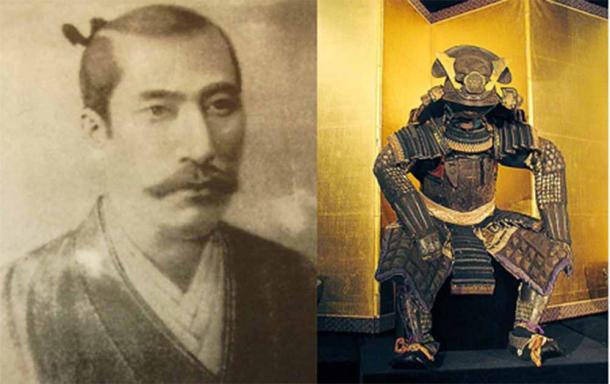
Left: Copy of a memorial image of Oda Nobunaga (1534-82) drawn shortly after his death. Right: Armor of Oda Nobunaga (Left: Public Domain ; Right Fass-Dew / CC BY SA 3.0 )
On September 29th, 1571, Oda Nobunaga led a massive army of 30,000 warriors and besieged the Sohei monks’ stronghold at Mount Hiei. He defeated the monks, razed Enryaku-ji to the ground, and in his wrath massacred thousands of monks, warriors, women, and children. It was an untold bloodshed that would remain remembered in Japanese history. Afterwards, the Sohei warrior monks of Enryaku-ji would never rise to even a fraction of their previous power.
This was the first sign of the waning power of the Sohei warrior monks. Oda Nobunaga was on the way to becoming the “first great unifier of Japan”, and would not let any faction stand in his path. He focused on defeating the Ikkō-ikki monks, successfully besieging them in their fortresses and putting many to the sword
The hardest was the Siege of Nagashima, which took Nobunaga three attempts: in the third and final siege, in 1574, the fortress was set ablaze, with 20,000 Ikkō-ikki inhabitants perishing in the flames. This was another sign that warrior monk factions were quickly disappearing.
In the 1580s and 1590s, the lead subordinate of Oda Nobunaga, the daimyo Tokugawa Ieyasu , fought in a number of smaller battles and skirmishes, defeating the last of their enemies and taking control of the country by 1603. By that time, it became certain that the era of the Sohei warrior monks was finally finished.
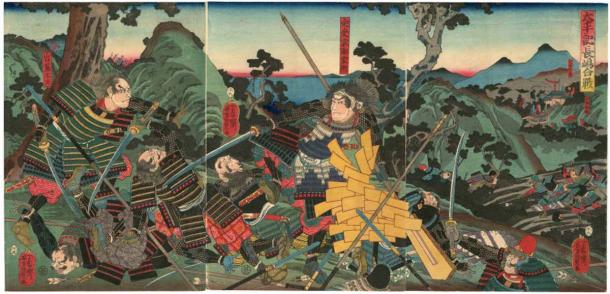
An ukiyo-e of the Battle of Nagashima, one of the final Sohei warrior battles. ( Public Domain )
A Force to Rival the Samurai
The Sohei warrior monks were surprisingly efficient in the arts of war, eventually growing as powerful as the noble samurai. They wielded a variety of special weapons, the chief of which was the polearm – naginata. This gave them a special fighting edge, especially against the horse-mounted samurai of old. But still, the Sohei could not adapt to the changing times, and the growing power of the feudal daimyo lords. With one decisive strike, their prominence was crushed in flames and bloodshed, and their time was quickly over. The tradition of warrior monks quickly lapsed into history, and Japan transformed into a whole new era.
Top Image: Buddhist Sohei warrior monks played a critical role in Japanese politics for centuries. Source: Brunogm / Adobe Stock
By Aleksa Vučković
Related posts:
Views: 0
 RSS Feed
RSS Feed















 February 9th, 2023
February 9th, 2023  Awake Goy
Awake Goy  Posted in
Posted in  Tags:
Tags: 
















